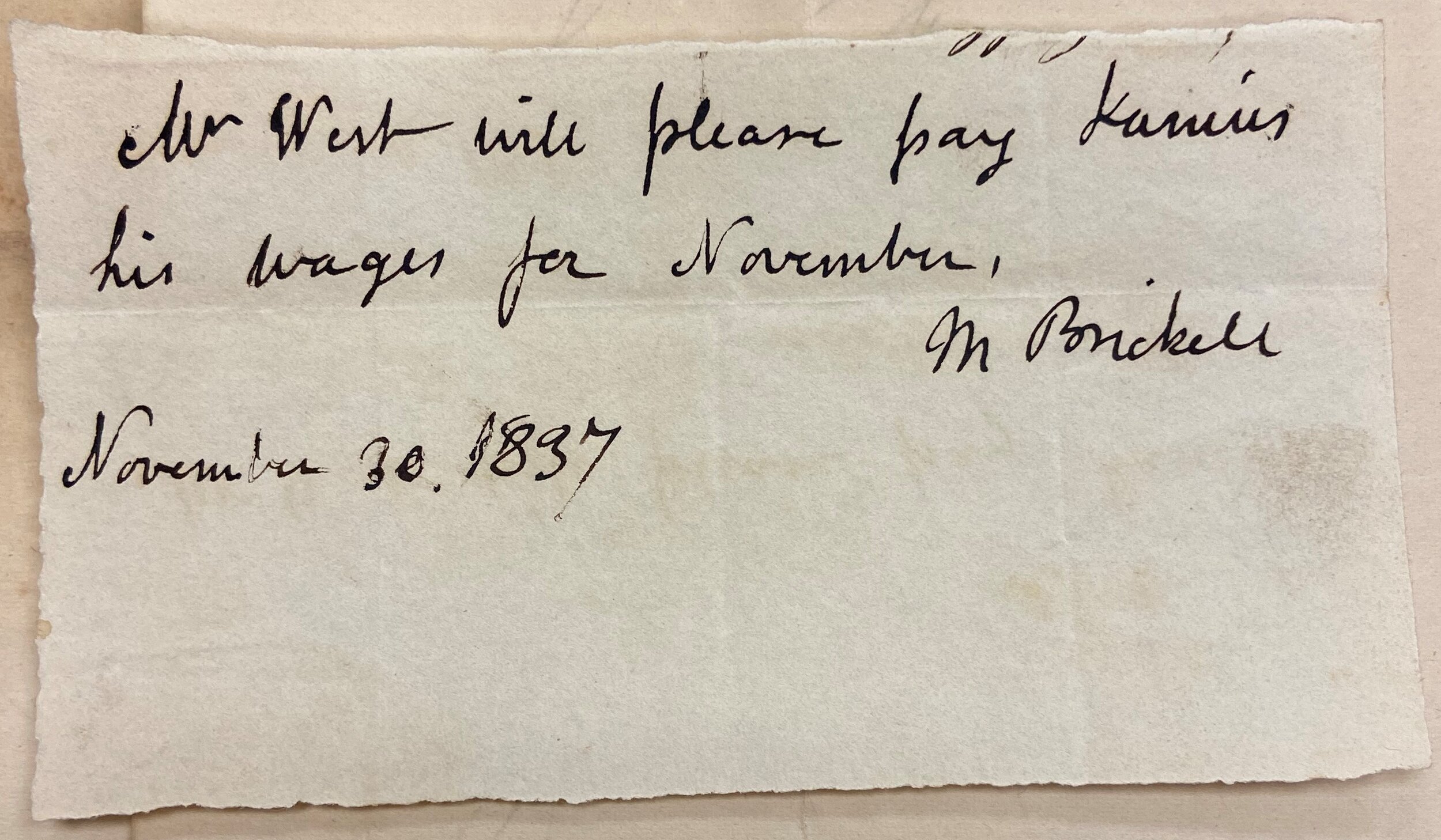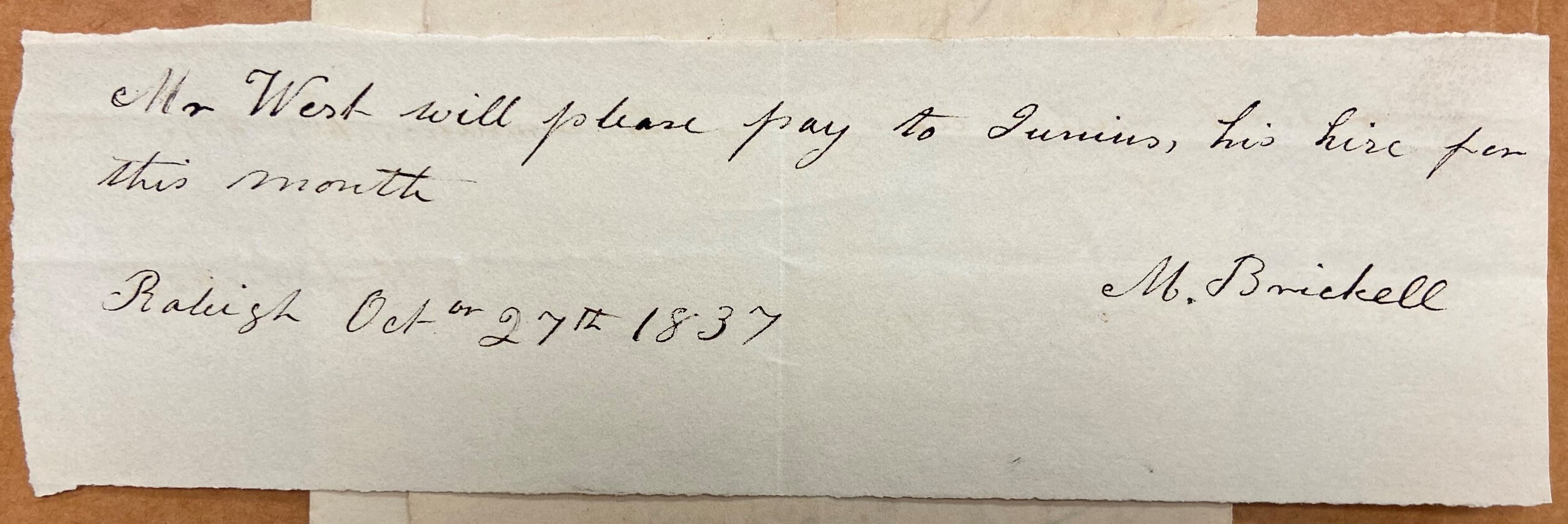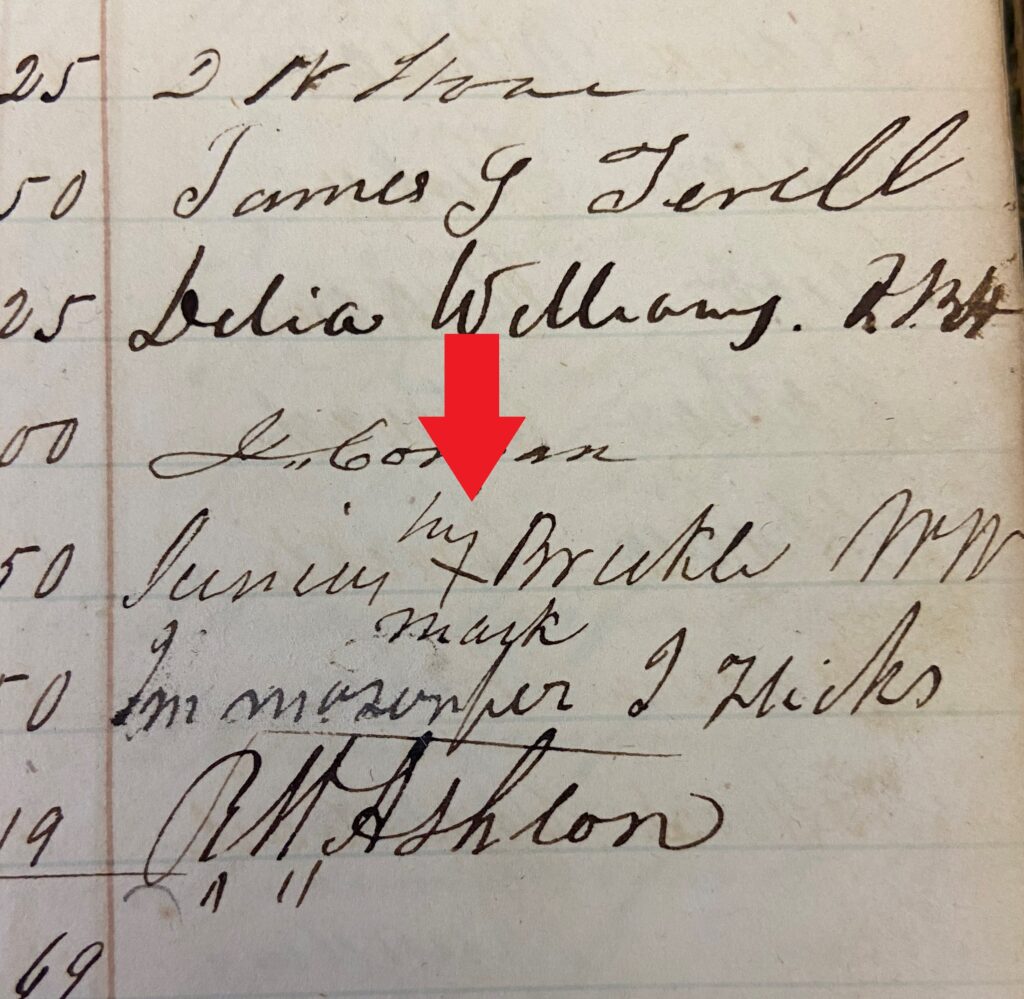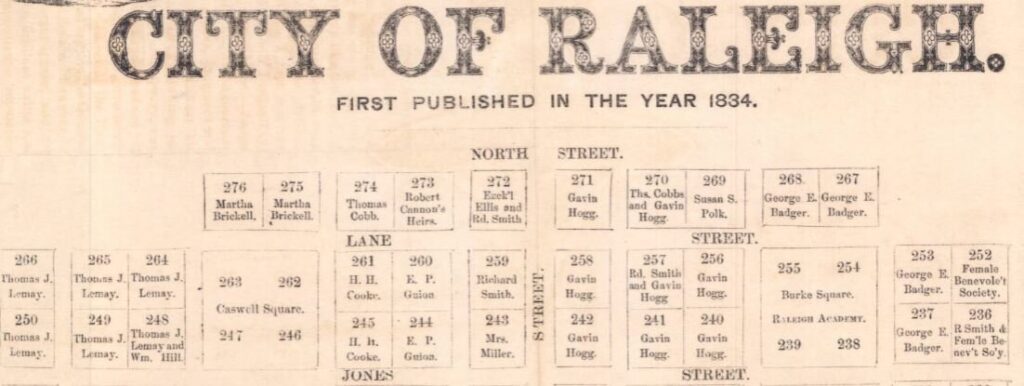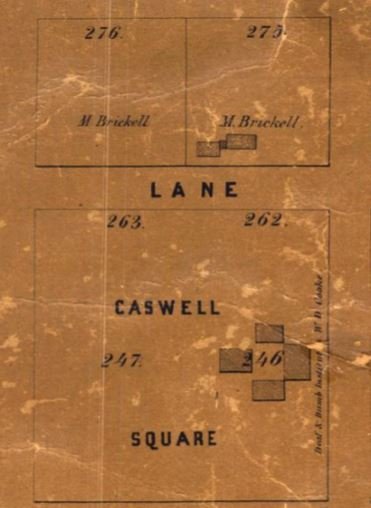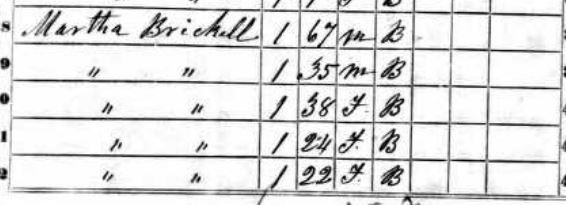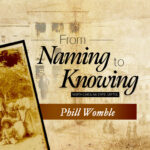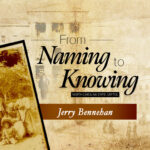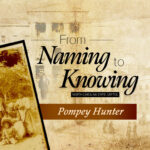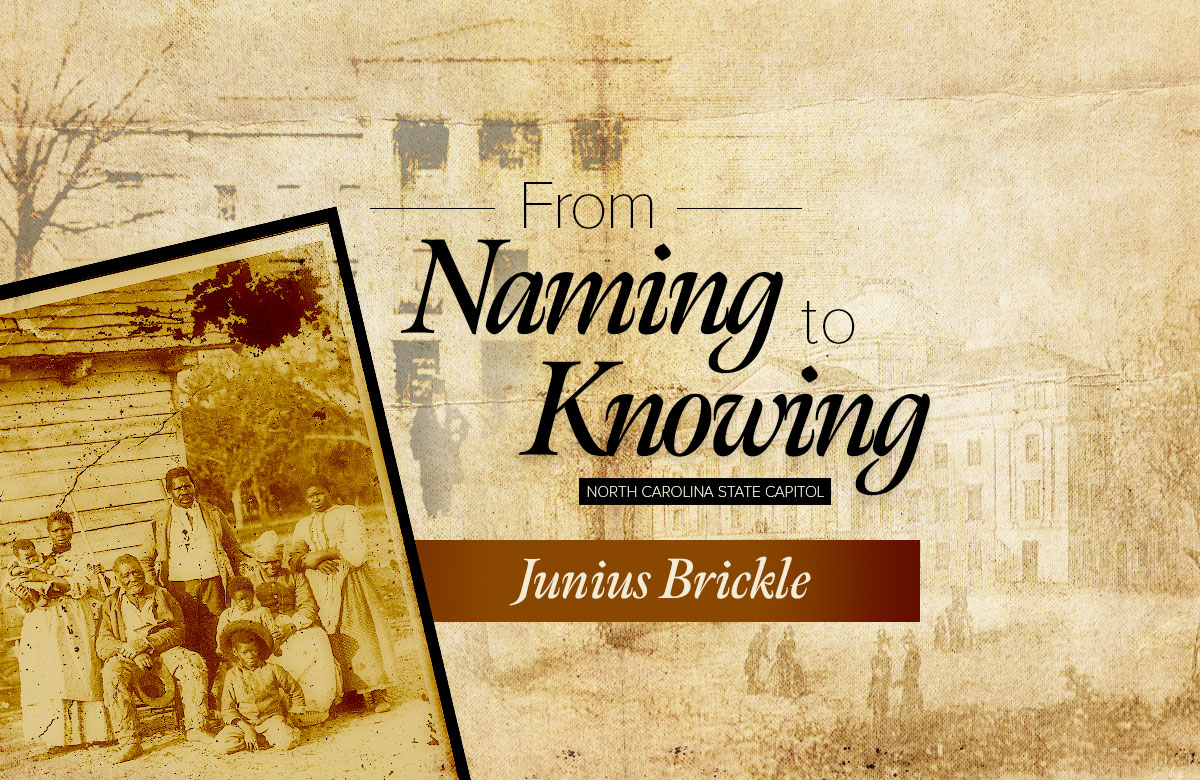
Based on later records, Junius Brickle was probably born around 1806 to Bill Holmes and Nancy Brickle. He is listed on the 1834 Report of the Commissioners appointed to superintend the re-building of the State Capitol. The report lists him as a “laborer,” and he was compensated $.50 per day. Though we don’t know much about Junius’ early life, at some point he was married to Delia Leach.
We’re not sure if Junius was able to pocket any of the money his labor generated at the Capitol, but notes in the State Capitol Construction Records show his enslaver Martha Brickell requesting payment from the Capitol project for Junius’s labor. (For more on the topic of women enslavers)
Martha also requests that Junius be able to pick up his payment. In other Capitol construction records, there are lists of enslavers signing for their enslaved people’s compensation. Here among the names of enslavers, we can see that Junius made his own mark on this list.
Junius probably walked to the Capitol’s construction site from Martha Brickell’s property in downtown Raleigh. This map from 1834 shows that Martha owned lots to the north of the Capitol on Lane Street between McDowell and Dawson Streets. In 1847, Martha still owned this property.
Martha (Patsey) Lane Brickell was born in Wake County in 1778. She was the daughter of Colonel Joel Lane, who in 1792 sold 1000 acres to the state of North Carolina as a site for the city of Raleigh. In his 1798 will, Joel Lane leaves to his “Daughter Martha Lane, her heirs and assigns forever the following Negroes VIZ Sam, Phill, Sally, Nansey and their future increase, also one Feather bed and furniture,” and it is possible that the “Nansey” listed here was Junius’ mother – who he later names as Nancy Brickell. This would mean Martha inherited Junius’ mother upon her father’s death.
Martha was first married to a man named Dugald McKethan, who was one of Raleigh’s first city commissioners. McKethan died in 1803, and Martha married Jonathan Brickell in 1806. Jonathan then died in 1808. It’s possible that Martha inherited enslaved people from both her husbands upon their deaths – both men are shown enslaving multiple people in the 1800 census.
By 1850, Martha enslaved eight people in Wake County. The census that year shows ages and sex of the enslaved people, and as Junius would have been around 44 at the time, none of the people listed fit his description. We’re not sure if Junius was still enslaved by Martha during this period.
Martha died in 1852, and her will mentions only a “negro girl named Harriet about two years of age” that she leaves to her daughter-in-law and a “negro boy John,” who was to be sold by her executors.
However, Junius was listed in the Raleigh Register’s call for letters on June 1st of 1855. After Emancipation, Junius’ marriage was recognized. Though he could have been married earlier, a North Carolina marriage record lists his marriage to Delia Leach on May 2nd, 1878 when he was 72 years old.

References:
- Dugald McKethan, Wills and Estate Papers (Wake County). State Archives of North Carolina.
- Joel Lane, Last Will & Testament, 1798.
- Jonathan Brickell, Wills and Estate Papers (Wake County). State Archives of North Carolina.
- Map of the City of Raleigh, 1847. Surveyed and drawn by J.W. Johnson. Entered according to act of Congress in the Year 1847 by J.W. Johnson in the Circuit clerk office of the district of North Carolina. Accessed in the Raleigh History Collection, State Archives of North Carolina.
- Martha Brickell, Wills and Estate Papers (Wake County). State Archives of North Carolina.
- North Carolina County Marriage Indexes. State Archives of North Carolina.
- Plan of the city of Raleigh first published in the year 1834. Map printed by Walters, Hughes and Company, Raleigh, N.C. From the book, Early Times in Raleigh Addresses Delivered by the Hon. David L. Swain, 1867. Accessed in the Raleigh History Collection, State Archives of North Carolina.
- Report of the commissioners appointed to superintend the re-building of the State Capitol. Philo White, Printer to the State, Legislature of North Carolina, 1834. Accessed in the Raleigh History Collection, State Archives of North Carolina.
- Second Census Of The United States, 1800, Record Group: Records of the Bureau of the Census. The National Archive, Washington, D.C.
- Seventh Census Of The United States, 1850, Record Group: Records of the Bureau of the Census. The National Archive, Washington, D.C.
- State Capitol: Laborers’ Pay and Enslaved Labor. State Archives of North Carolina.

